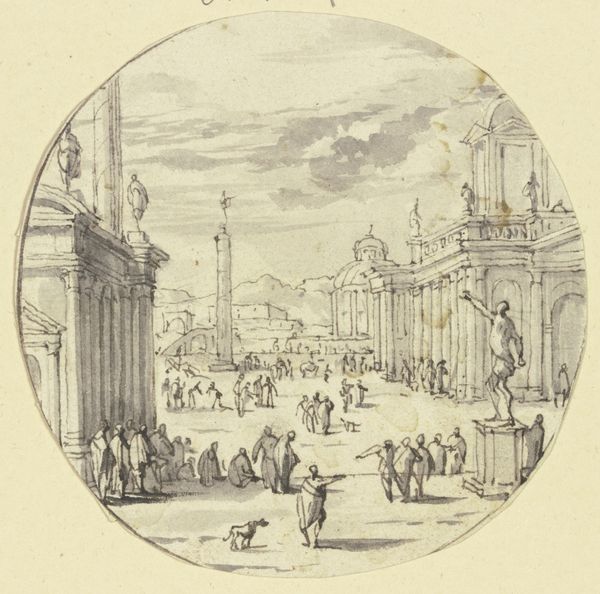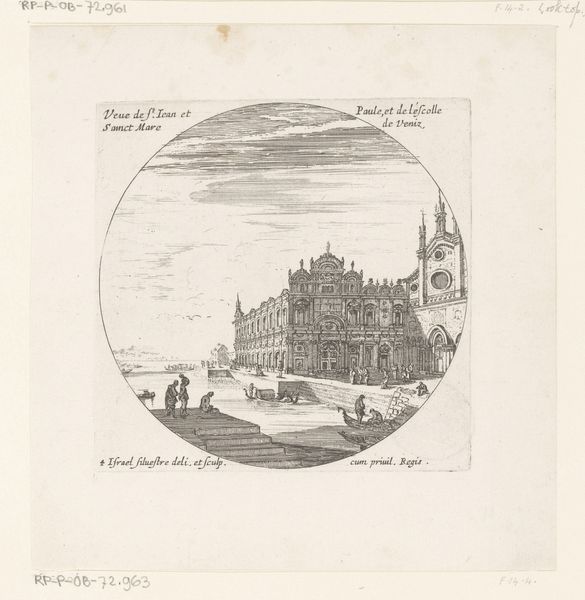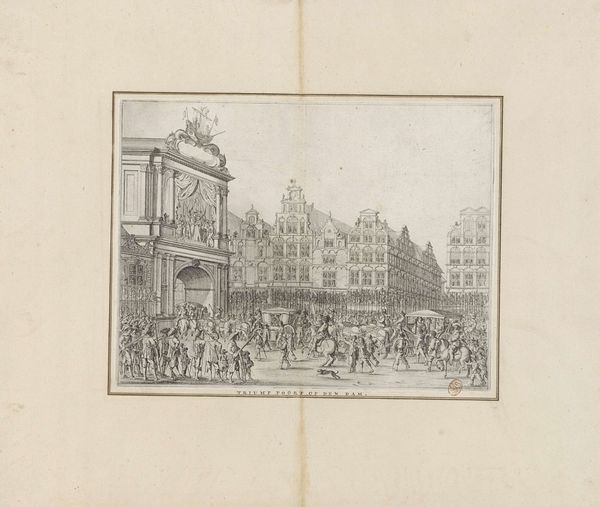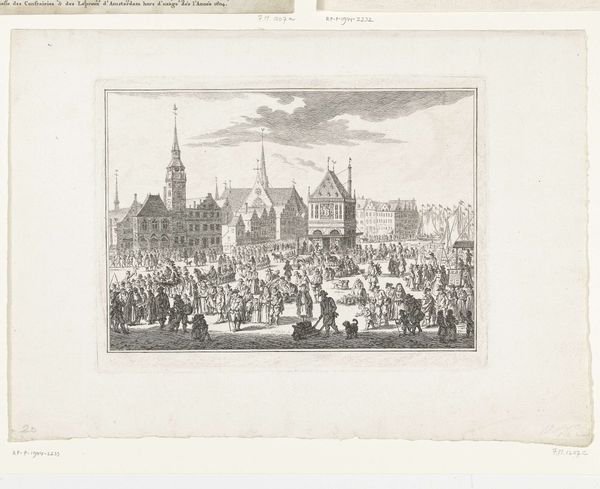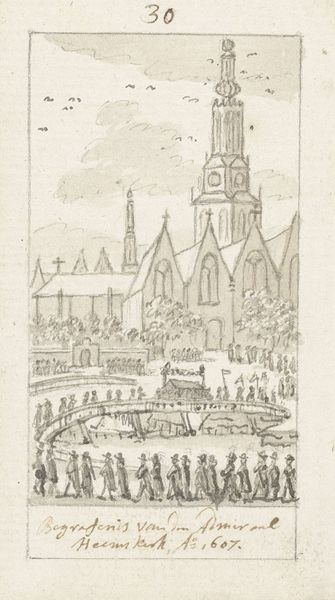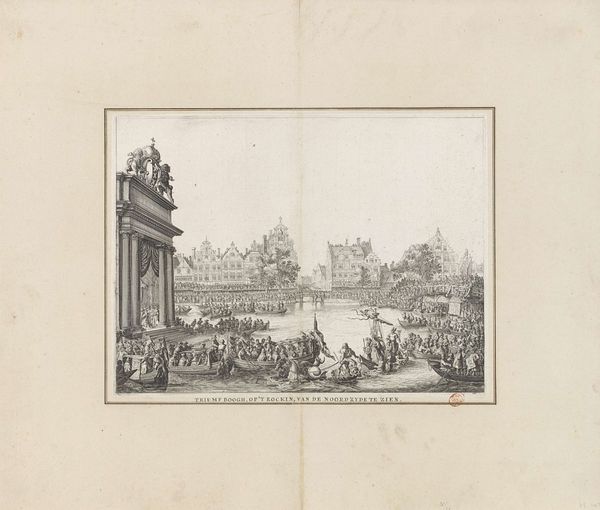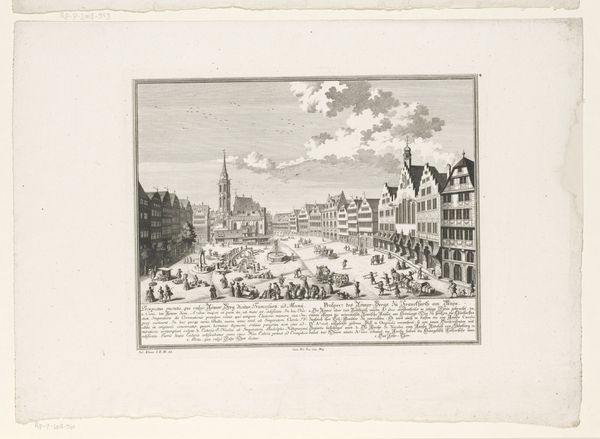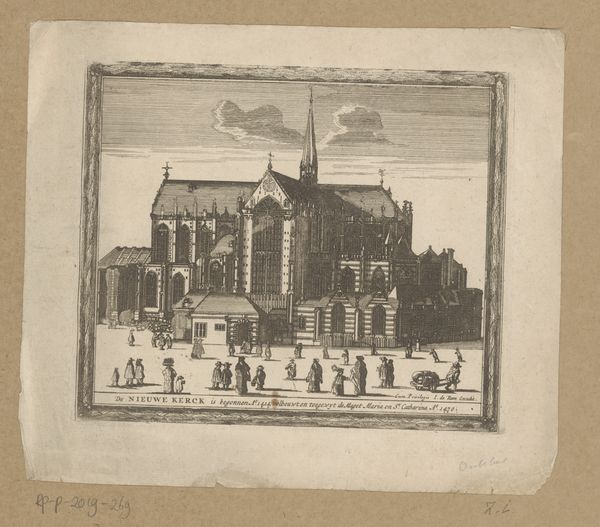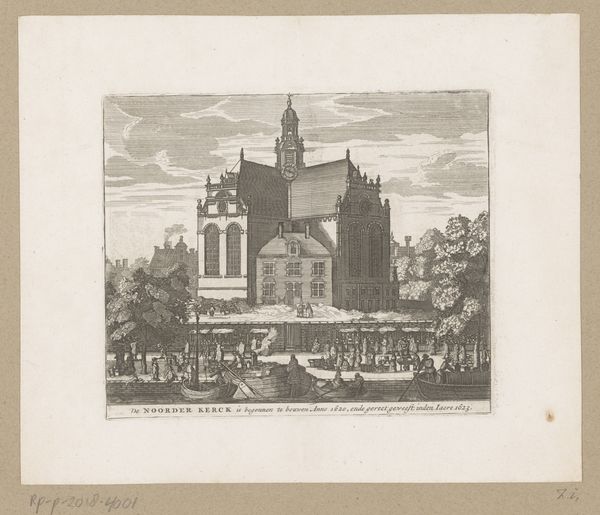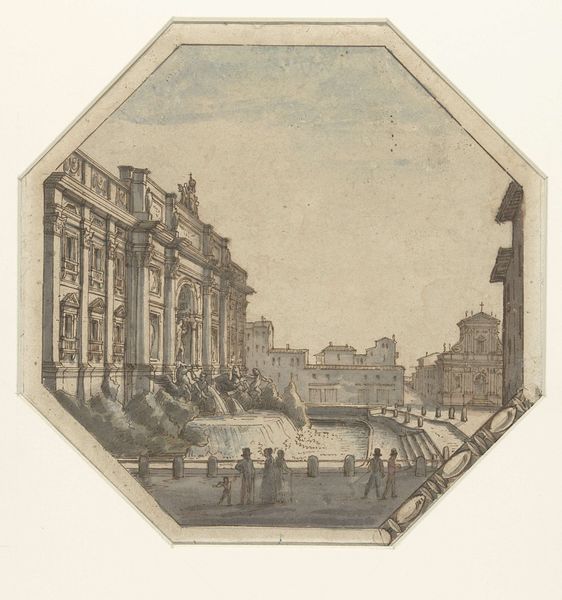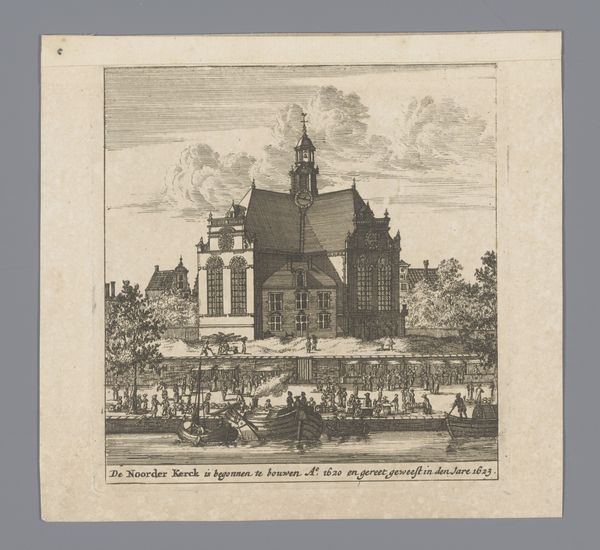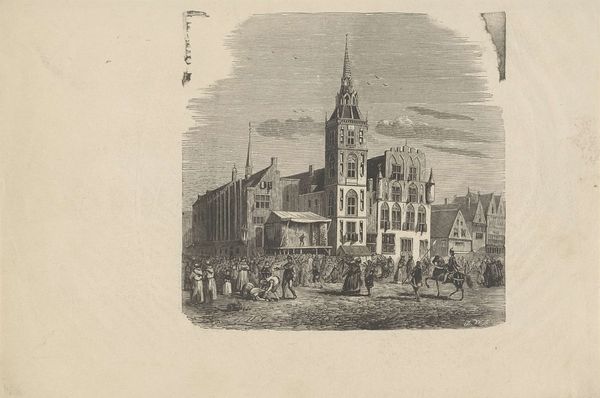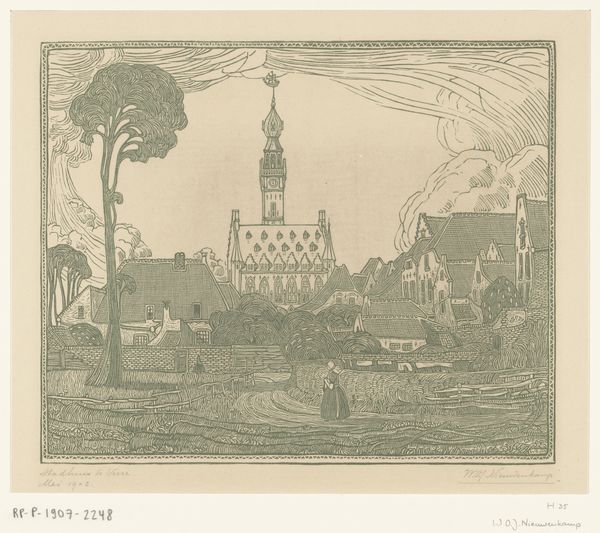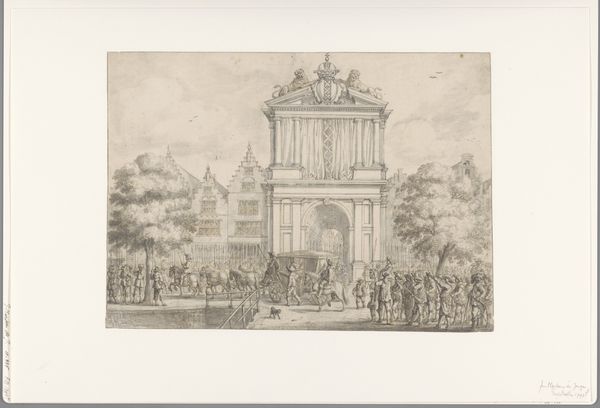
Beëdiging van het Regeringsreglement op de Grote Markt te Haarlem in 1787 1754 - 1825
0:00
0:00
drawing, ink, pen
#
drawing
#
neoclacissism
#
quirky sketch
#
mechanical pen drawing
#
pen sketch
#
old engraving style
#
landscape
#
figuration
#
personal sketchbook
#
ink
#
sketchwork
#
pen-ink sketch
#
line
#
pen work
#
sketchbook drawing
#
pen
#
cityscape
#
history-painting
#
storyboard and sketchbook work
Dimensions: height 118 mm, width 119 mm
Copyright: Rijks Museum: Open Domain
Editor: This pen and ink drawing by Hermanus Numan, created sometime between 1754 and 1825, is called "Beëdiging van het Regeringsreglement op de Grote Markt te Haarlem in 1787." It depicts a cityscape within a circle. It reminds me of a commemorative coin or an official seal. What do you see in this piece? Curator: It’s fascinating how Numan uses the circular format, framing this historical event as both a contained moment and something potentially circulated and disseminated. We're seeing the swearing-in of the new Haarlem government in 1787 after the Patriot revolution was suppressed, which resulted in the Orangists regaining power. The drawing's style, the clean lines, the neoclassical architectural elements—the domed structure and the grand church—they all suggest an attempt to project stability and legitimacy onto the new regime. Editor: So, it's like a visual piece of propaganda? The art style lending credibility to the event? Curator: Precisely. Neoclassicism was often employed to evoke the perceived virtues of the Roman Republic, connecting this contemporary event to ideas of order, reason, and tradition. The choice of such a public space as the Grote Markt, filled with linear formations of soldiers, further emphasizes the state's power and control. Consider how public art like this plays a key role in constructing a specific narrative and influencing public opinion. What effect do you think that might have had at the time? Editor: I guess it would depend on whether you were an Orangist or a Patriot! If you supported the Orangists, it would be a satisfying image of order restored. But if you were a Patriot, it could be a bitter reminder of defeat. It’s a drawing, so how would it have circulated? Curator: Good point. Although a drawing, we could ask if it would later be developed into a print. Editor: I see what you mean. It gives the event a kind of official stamp. Thanks, I never considered how the artistic style and the public setting were so intertwined with political messaging. Curator: Indeed. It reveals how art isn't just a reflection of history, but an active participant in shaping it.
Comments
No comments
Be the first to comment and join the conversation on the ultimate creative platform.
